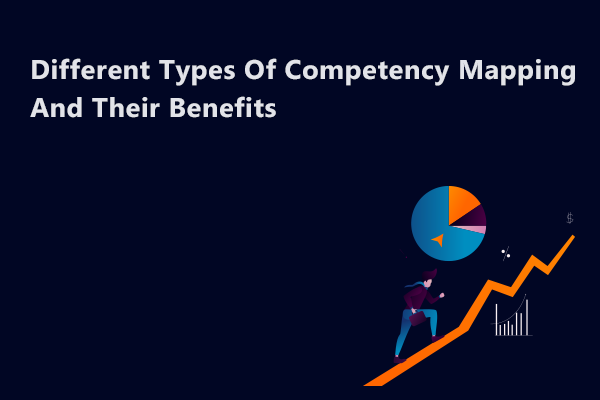
Different Types Of Competency Mapping And Their Benefits
The purpose of Competency Mapping is to identify main competencies within an organization. Competency mapping is a crucial exercise for companies.
Ideally, the process of competency mapping refers to recognizing the key competencies within an organization that can achieve organizational goals and help the organization succeed.
The Concept of Competency Mapping
The process of Competency Mapping involves identifying the key competencies for an organization and/or a job and incorporating them throughout the various processes such as evaluation of jobs, training, recruitment, etc. of an organization. A personality test focuses on two areas - emotional intelligence or emotional quotient (EQ), and strengths in areas such as teamwork, leadership, and decision-making.
Competency mapping is often used by large organizations to understand how to most effectively use the strengths and competencies of their employees. In addition, competency mapping can be done for freelancers or contract workers, or for those seeking employment to highlight the specific skills that will make them desirable to a prospective employer. One can determine these kinds of skills when he or she is prepared to do the work. Overall, competency refers to a skill/quality that assists an organization in job evaluation, training, and recruitment.
Need for Competency Mapping
Competency mapping has gained popularity, momentum, and commonness. As the business environment rapidly changes, the old adage 'slow and steady wins the race' no longer holds true. Companies have become more aware of the importance of having competent employees and developing distinctive competencies for every organization because of the changing world economy and the world becoming a one roof global market.
Fast and consistent manpower is important for the success of any organization. The competency mapping process is involved in the collection and consolidation of information about the appropriate talent at various levels.
Competency Mapping and Competency Management
Competency mapping involves breaking down a given role into constituent tasks or activities and identifying the competencies (technical, managerial, behavioral, conceptual knowledge, attitudes, skills, etc.) needed to accomplish those tasks.
Competency management begins with the identification of competencies (different sets of competencies - for specific jobs and for entire organizations), defines those competencies, standardizes them on a rating scale along with behavior indicators for measurement, selects the means to measure those competencies, and ties it into other HR systems such as training and performance management. Competency models capture the essence of companies' competency management frameworks.
Types of Competency Mapping
Broadly, there are four types of Competency Mapping:
- Intellectual Competency Mapping
- Motivational Competency Mapping
- Emotional Competency Mapping
- Social Competency Mapping
Intellectual Competency Mapping
An individual who determines the work that is to be done with his/her intellectual ability.
Components of Intellectual Competency Mapping
- Communication skills
- Creative Thinking
- Analytical Capabilities
- Organizing & Planning
Motivational Competency Mapping
Individuals who are determined to raise motivation levels in order to ensure their work is more efficient.
Components of Motivational Competency Mapping
- Learning Continuously
- Achievement-Oriented
- Management of time
- Persistence
Emotional Competency Mapping
An individual who determines an individual's emotional quotient in order to build self-confidence and optimism.
Components of Emotional Competency Mapping
- Positivity
- A new initiative
- Stress management
- Inspiring leadership
Social Competency Mapping
Those who assess the social ability of a person, interpersonal skills, and teamwork skills.
Components of Social Competency Mapping
- A team effort
- Taking responsibility
- Satisfaction of customers
- Good Interpersonal Skills
Key Benefits of Competency Mapping
- It assists organizations in improving their standards of production and work style.
- It provides organizations the opportunity to align their key strategies across different departments to achieve common objectives and accurate results.
- A role analysis assists in understanding the responsibilities and requirements of the role.
- It also sets expectations for performance at different levels within an organization.
- This exercise provides employees with accurate work & job satisfaction.
Takeaway
Companies that set specific goals and evaluate employees based on how well they meet or exceed those goals can see the results for themselves. To compete successfully in today's market, companies must achieve strategic growth, retain and expand their market share, attract, manage, and nurture talent, and deliver high-quality performance to all stakeholders. Innovation is the key to success. There is no way to maintain the status quo, regardless of whether it is your company's bottom line, the quality of your service, or the way your employees perform their work.
Performance is improved by using a competency mapping model. It has a lot of benefits and proves to be the best corporate training option so far. The missing links can then be addressed by organizing a training program. When a core competency of an individual falls short of what seniors expect, it is a cause for concern. An individual's personality test can reveal some other skills that they might not have displayed so far. This can be useful to the company, as training could help them develop these skills further.
